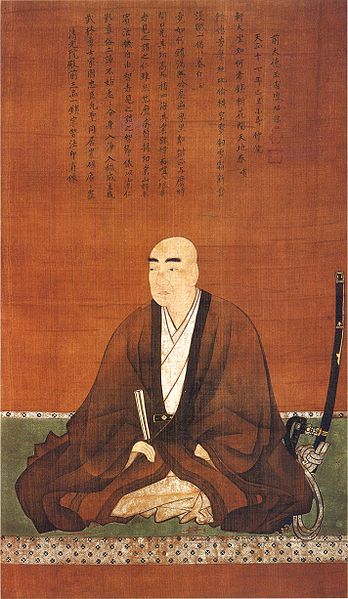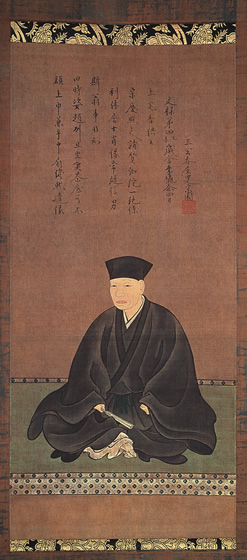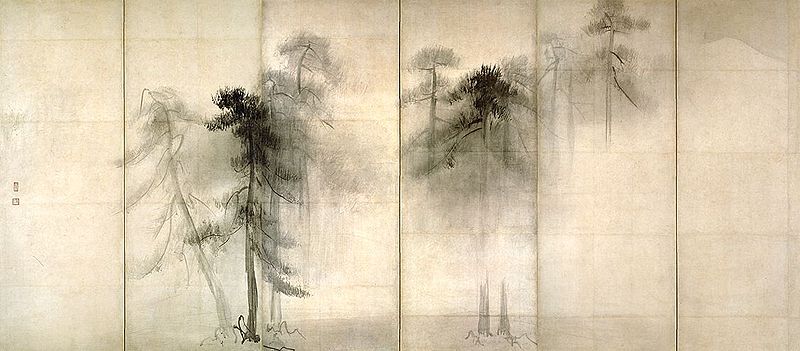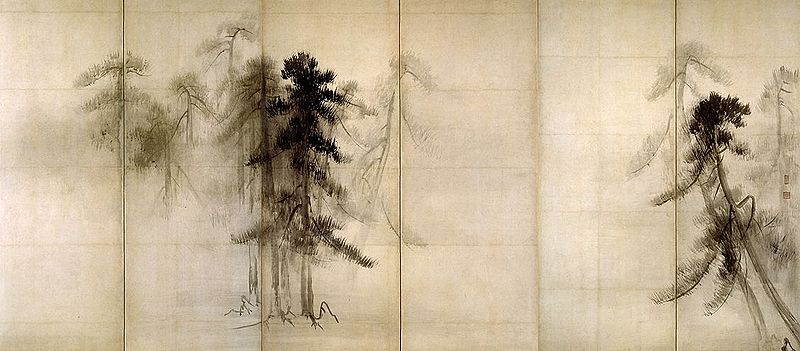<Back to Index>
- Mathematician Adolf Kneser, 1862
- Painter Hasegawa Tōhaku, 1539
- Minister of Armaments and War Production Berthold Konrad Hermann Albert Speer, 1905
PAGE SPONSOR
Hasegawa Tōhaku (長谷川 等伯, 1539 - March 19, 1610) was a Japanese painter and founder of the Hasegawa school of Japanese painting during the Azuchi - Momoyama period of Japanese history.
The man known today as Hasegawa Tōhaku was born in 1539 in Nanao, a town in Noto Province (located in the vicinity of present day Ishikawa prefectures) to a noted local family of cloth dyers, although evidence shows that Tōhaku's original family name was Okumura and that he was adopted into the Hasegawa family.
Tōhaku started his artistic career as a painter of Buddhist paintings in his home province of Noto. By the age of twenty Tōhaku was a professional painter, and by his thirties, had moved to Kyoto to study under the prestigious Kanō School, then headed by Kanō Shōei. The Kanō School was
well known at the time for their large bold paintings that decorated
the castle walls of many a wealthy warlord patron. These often ink on
white paper or gold - leaf decorative wall panels served a dual purpose
of reflecting light around the dim castle rooms as well as flaunting
the castle owner's abundant wealth to commission such extravagant
pieces. Many of Tōhaku's earlier works with the Kanō school, such as his Maple, Chishaku - in painted in 1593.
At the same time he also studied the older Sung, Yuan and Muromachi periods’ styles of ink painting by examining scrolls from Mu Chi and Sesshū Tōyō, which he is believed to have gained access to in his time at the Daitoku-ji temple in Kyoto. After a period of time in Kyoto, Tōhaku developed his own style of Sumie which in many ways departed from the bold techniques indicative of the Kanō School, and called back to the minimalism of its predecessors. The works of Sesshū Tōyō in particular influenced Tōhaku's redirection of artistic style as Tōhaku also studied under Sesshū's successor, Toshun for some time. Tōhaku was in fact so much enamored with the techniques of Sesshū Tōyō that he attempted to claim rights as his fifth successor, though he lost in a court battle to Unkoku Togan. Still, the influence of Sesshū is evident in many of Tōhaku's mid to late works, such as his famous Shōrin-zu byōbu (松林図 屏風) Pine Trees screen, which were declared a national treasure of Japan are argued to be the first paintings of their scale to depict only pine trees as subject matter.
The school founded by Hasegawa Tōhaku is known today as the Hasegawa school. This school was small, consisting mostly of Tōhaku and his sons. However small, its members conserved Tōhaku's quiet and reserved aesthetic, which many attribute to the influence of Sesshū as well as his contemporary and friend, Sen no Rikyū. It is suspected that these simple aesthetics protest the usage of intimidation and wealth rampant in the Kanō School.
Tōhaku's most noted contemporary was Kanō Eitoku who often competed with Tōhaku for the patronage of Toyotomi Hideyoshi.
After Eitoku's death in 1590, Tōhaku stood alone as the greatest living
master of his time. Becoming an official painter for Hideyoshi,
producing some of his greatest and most elegant paintings. He and his
atelier produced the wall and screen paintings in Shounji temple
commissioned by Toyotomi Hideyoshi in 1593. The paintings moved to Chishaku-in Temple, Kyoto and survived. At the age of 67, Tōhaku was summoned to Edo and granted the priestly title of hōgen by the Shogun Tokugawa Ieyasu. There he stayed for the remainder of his life.



